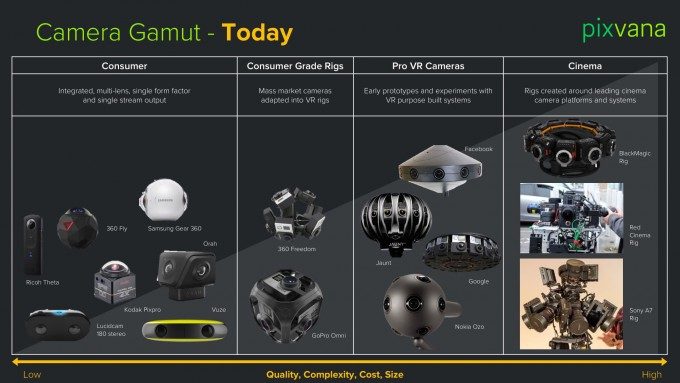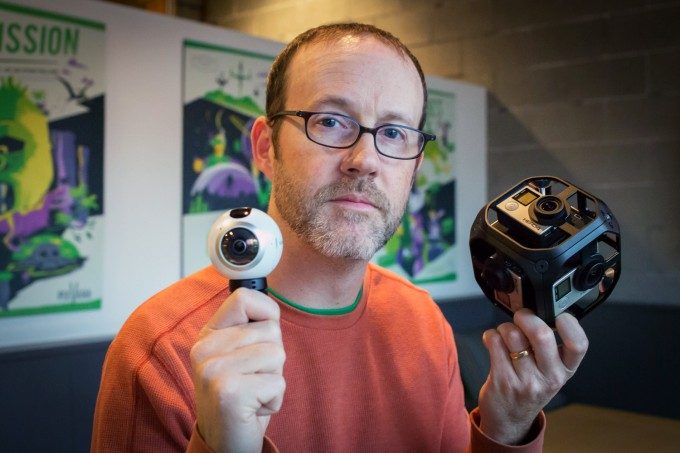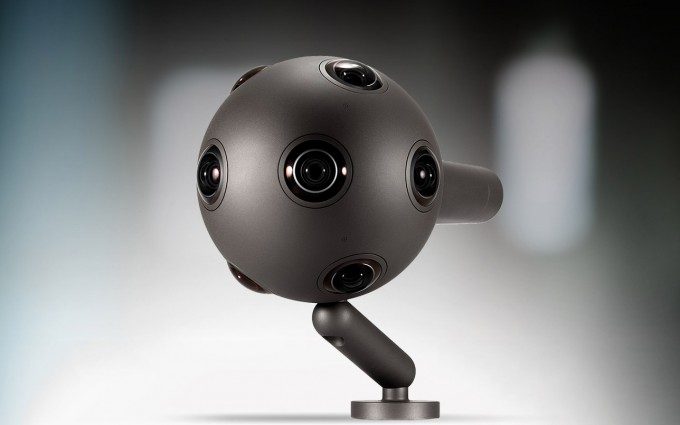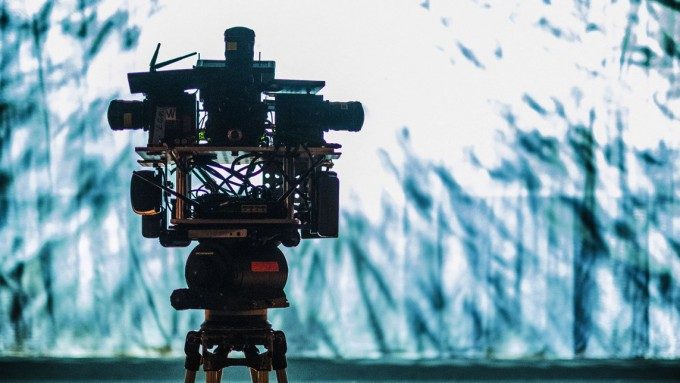With a virtual reality camera, you can capture the whole world around you in a 360 degree videosphere. VR filmmaking is seeing rapid innovation, meaning that there are more 360-degree cameras on the market now than ever before, geared at everyone from intrigued consumers to high-end professionals. This overview is designed to give you solid starting points across a range of options.
Aaron is Pixvana’s in-house filmmaker and executive producer. A veteran of the post-production world, he has worked as a director, visual effects supervisor, senior colorist, editor, and more, at renowned facilities including Emotion Studios, Evil Eye Pictures, Spy Post, and The Orphanage; he currently serves as a board member of the Visual Effects Society. Aaron is a creative problem solver who has lent his talents to box office hits such as The Avengers, Iron Man, films from the Harry Potter and Pirates of the Caribbean series, and many others.
At Pixvana, we’re constantly testing new cameras, including custom rigs, to help advise on what the best VR system is for a variety of projects. There’s not one ‘best’ 360 VR camera; the best one is the one that suits your needs.
First, when planning to make a piece of VR film content, it’s important to ask yourself: does this experience really need to be immersive? How will the content be delivered and experienced? What are my budgetary and production constraints? All of these factors can help narrow down your camera choices from the get go. Integrated, off-the-shelf VR cameras make the post-production process much simpler, but custom camera rigs can also have some advantages for more discerning filmmakers. I’ll cover a variety of options here.
Entry Level
For entry-level choices, I like the Samsung Gear 360 or Ricoh Theta S, both of which let users easily experiment with VR for under $400. These dual lens 360 cameras are consumer-friendly, with small, portable form factors and accompanying smartphone apps to quickly review footage. The Ricoh Theta S can also livestream which is a nice perk.
These cameras offer lower resolution than the more high-end options, but if you’re a consumer or even a professional just dabbling in VR for the first time, these are solid yet affordable options to help give you the lay of the land before making a larger investment. Even more experienced professionals shouldn’t overlook these cameras, they’re great to have on hand for proof of concept, scouting, and pre-visualization.
Mid Range
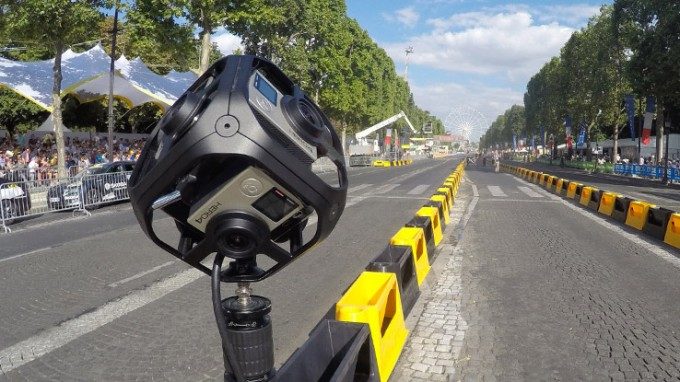
Moving up to the mid-range, the GoPro Omni ($5,000) is a strong off-the-shelf option, offering six synchronized HERO4 Black cameras in a portable spherical rig, all capturing content at 8K resolution. In addition to the hardware, GoPro’s Kolor software suite gives users a straightforward way to import, stitch, view, and publish content.
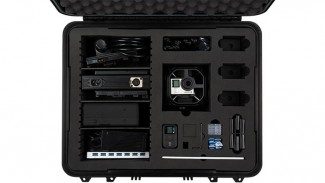 The Omni has some drawbacks, notably, no live preview or real time stitching. But combined with a Ricoh Theta S or Samsung Gear 360 you can still get quick on-set previews. The Omni remains my first choice in this price range because it provides a one stop-shop for VR at high resolution. And at the size of a grapefruit, it gives filmmakers a lot more freedom and flexibility on set than they might have with a larger custom rig. If you need something that won’t break the bank but will still produce high-res content, to me this is the most straightforward option on the market.
The Omni has some drawbacks, notably, no live preview or real time stitching. But combined with a Ricoh Theta S or Samsung Gear 360 you can still get quick on-set previews. The Omni remains my first choice in this price range because it provides a one stop-shop for VR at high resolution. And at the size of a grapefruit, it gives filmmakers a lot more freedom and flexibility on set than they might have with a larger custom rig. If you need something that won’t break the bank but will still produce high-res content, to me this is the most straightforward option on the market.
High End
If you’re looking for a professional camera, the Nokia OZO is a great option. Specifically designed for professional VR production, the Ozo is one spherical camera with eight synchronized sensors, and it comes with a standalone computer with Ozo software for live stitching and preview. It also offers ambisonic sound recording, partial stereo, and can live stream in HD resolution (and can capture footage up to 6K resolution).
The Ozo costs about $45,000 to buy or $3,000 per day to rent—nothing to sneeze at—but it does provide significant perks and a well-designed end-to-end workflow. Professionals looking for a robust, self-contained production pipeline, or who need to live stream at high resolution, should give the Ozo a try.
Custom Rigs
Lastly, custom camera rigs are another option for those filmmakers wanting a specific set of benefits not fulfilled by any off-the-shelf solutions. For a recent shoot, I opted to use a custom rig of five RED Weapon cameras in order to capture content at 10K resolution and 60 FPS. The higher your resolution, the better the content will look in a VR headset, something to keep in mind when deciding on a camera system. Using this custom rig also let me fully control the exposure, swap out lenses, and make other modifications to meet the goals of the production.
Though the rig delivered, it was large and cumbersome to move around on set, and was more complicated to use than an ordinary VR camera. Even seasonedpros should make sure their shoot is very well planned and really needs to meet certain requirements before experimenting with custom rigs.
Once you’ve decided on a camera, you’re ready to start capturing 360-degree video! With so much innovation in the VR space, I anticipate that higher resolutions and streamlined workflows will become even more standard.
Follow the Pixvana blog for more field tips as we continue to test available camera systems. HTC Vive and Oculus Rift users can also check out our SPIN Technology Preview on Steam to see firsthand how our Field of View Adaptive Streaming (FOVAS) technology delivers crystal clear content wherever you look.


